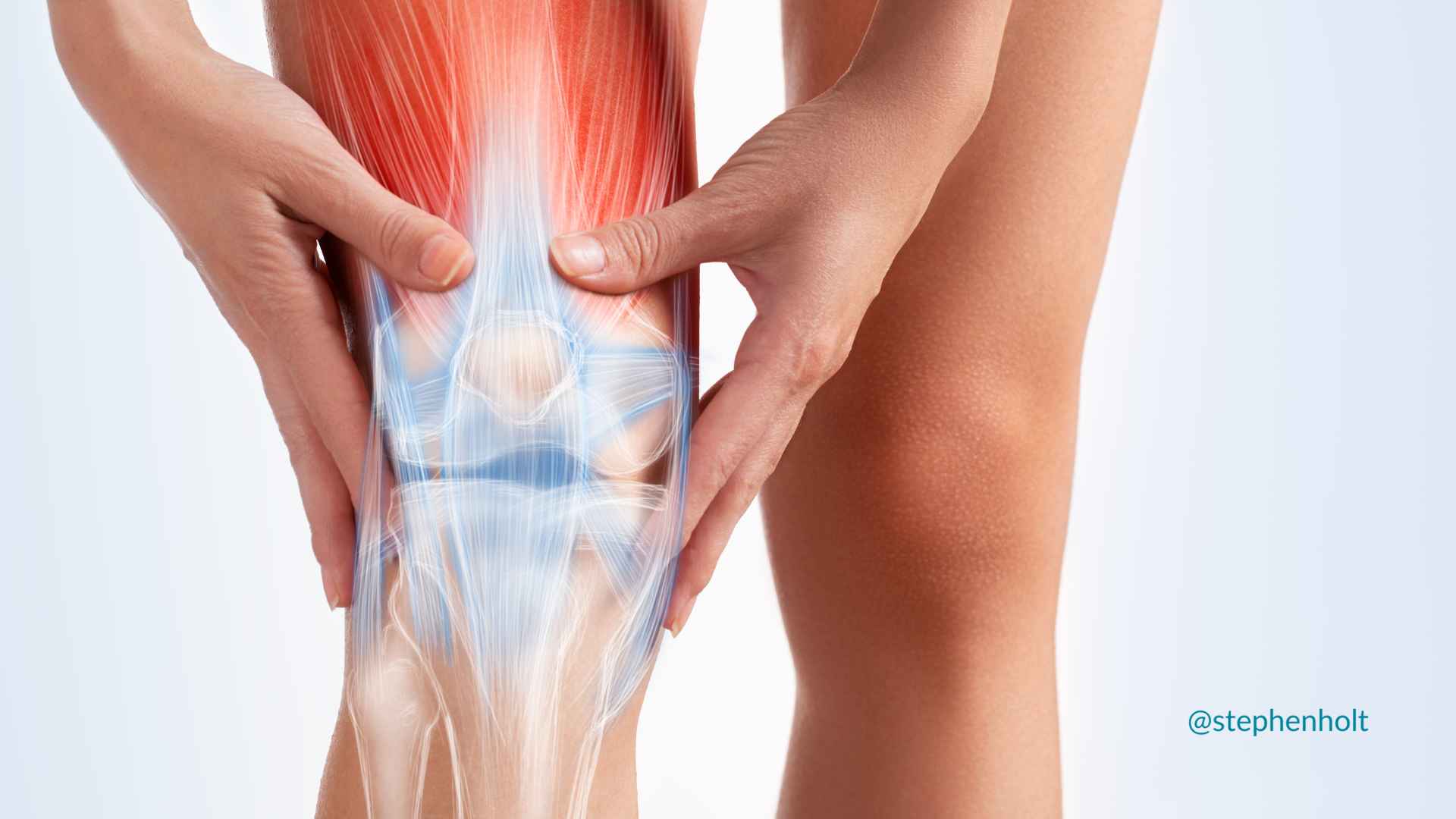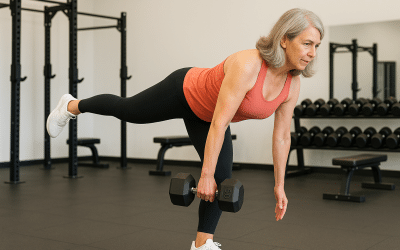Here’s what you need to know about joint pain after exercise
I’ve worked with thousands of women over 50, and here’s what I see too often:
They’re tough, committed, and show up consistently…
But their joints still ache. Knees flare up. Shoulders snap, crackle, and pop like breakfast cereal.
And they’re told to either “rest more” or “try something gentler.”
Neither solves the problem.
You shouldn’t feel like you need a recovery day from your recovery day.
So how do you tell if your workout is helping your joints… or quietly ruining them?
Let’s break it down.
Muscle Soreness vs. Joint Pain
You’re supposed to feel a little something after training. That’s part of the process.
But it should feel like muscle soreness—not sharp, stabbing, or lingering joint pain after exercise.
If you feel:
- A deep ache in a specific joint that lasts more than 48 hours
- Swelling or tenderness that doesn’t improve with light movement
- A “catching” or grinding sensation
…then we’re no longer talking about the “good kind” of sore.
The 3-Point Joint Check
Before you panic—or worse, give up—ask yourself:
1. Does it feel better after you warm up?
Muscular discomfort often improves with movement.
Joint issues don’t.
2. Is it symmetrical?
Post-exercise muscle soreness usually hits both sides.
Joint pain after exercise often shows up on just one side.
3. Does rest help or make it worse?
If rest relieves it, great.
If it worsens after sitting too long, that’s a mobility and strength imbalance, not just “getting older.”
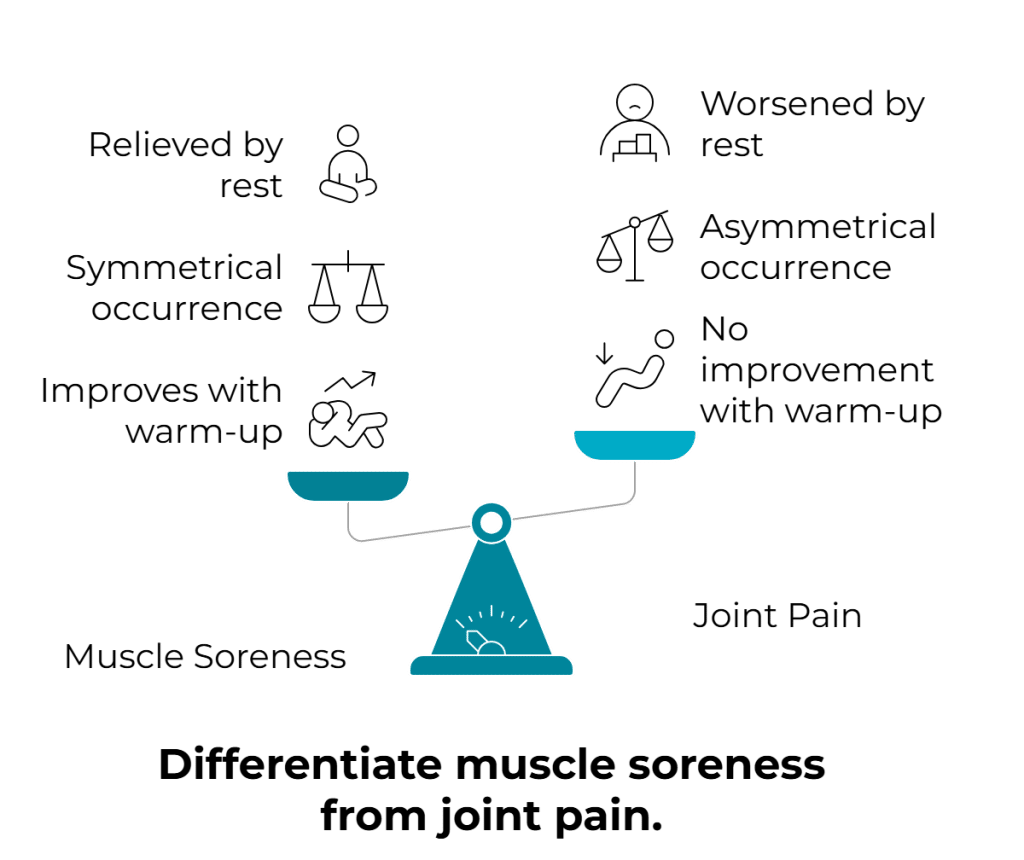
Expert Tip:
Your joints aren’t “delicate” just because you’re older. But they’re not indestructible either. Treat them with intelligent programming—not random punishment.
The Silent Joint Killers in Most Workouts
I’ve seen this firsthand—more than once.
A client (we’ll call her Renee) came to my gym in Timonium after trying three different programs.
Each promised “joint-friendly” fitness.
Each left her worse off than before.
Turns out, they had a few things in common:
- Too many reps, too fast, with no regard for form
- A steady diet of jumping and pounding (usually with poor landing mechanics)
- Weights too light to stimulate strength, but done until failure anyway
- Neglect of warm-ups and mobility altogether
Renee wasn’t “breaking down from age.”
She was stuck in a system that didn’t respect her joints.
What Your Joints Actually Like
Your joints respond best to:
- Real strength training with controlled tempo and full range
- Mobility work that supports your lifts, not stretches you randomly
- Consistency (not skipping from YouTube workout to YouTube workout)
- Recovery—not “taking it easy,” but letting your body adapt between sessions
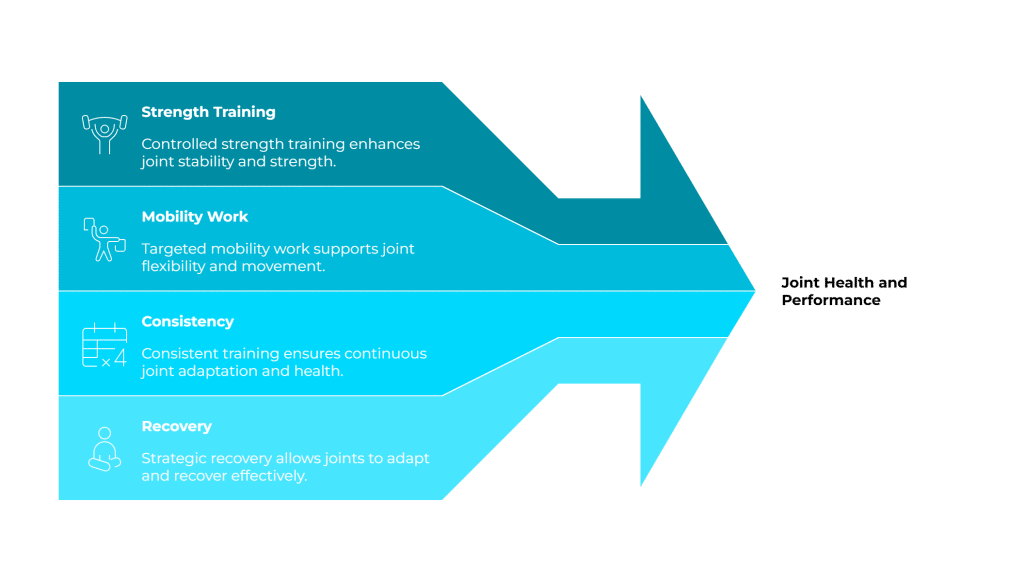
Expert Tip:
Your joints crave stability and strength. You don’t get that by doing 100 squats with bad form. You get it by doing far fewer reps but with perfect form—and enough weight to make it count.
What to Do If You’re Not Sure
Here’s how to troubleshoot before you throw in the towel:
- Start a quick journal. Track when and where discomfort shows up.
- Film a few reps. Watching your movement reveals a lot more than you think.
- Look for patterns. Does it happen with certain movements? After certain types of training?
- Ask better questions. Not “Should I just stretch more?” but “Am I preparing this joint to handle real load?”
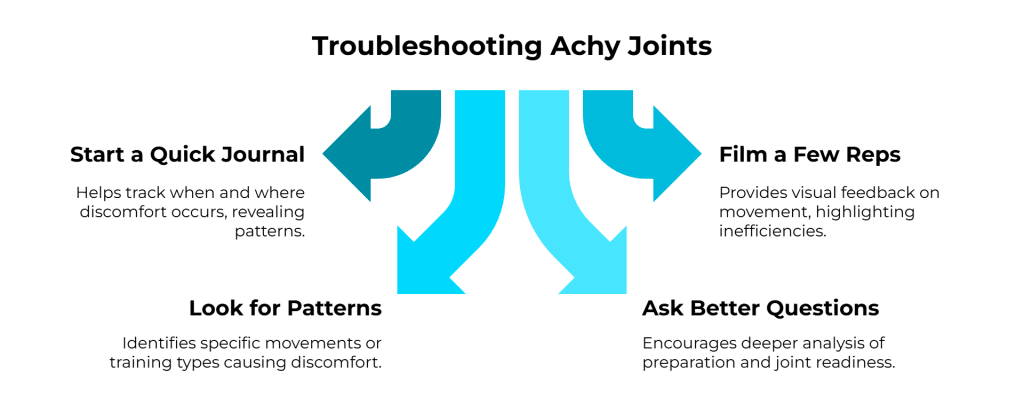
One of my longtime clients used to write off her shoulder pain as “just from sleeping funny.”
Turned out, her overhead press form needed a small tweak—and she was skipping the warmup that prepped her rotator cuff.
A 5-minute change erased years of aggravation.
Closing Thought
Your body’s not broken.
It’s just giving you clues.
Listen to your joints.
Train with purpose.
Ditch the guesswork.
You don’t need to back off your workouts. You need a fitness plan that makes your joints stronger, not sorer.
Want to check if your current plan is truly joint-friendly—or just popular on Instagram?
Send me a message. I’ll take a look.

